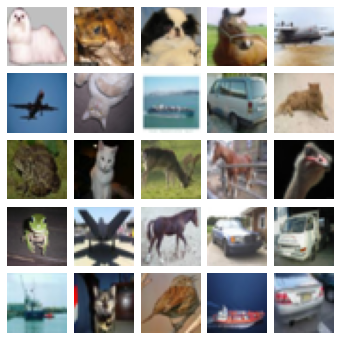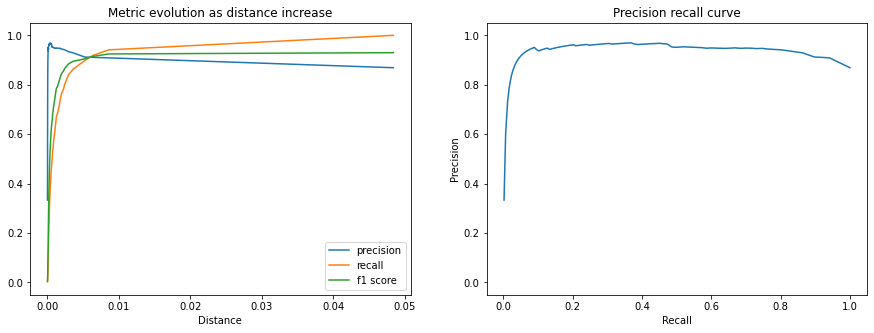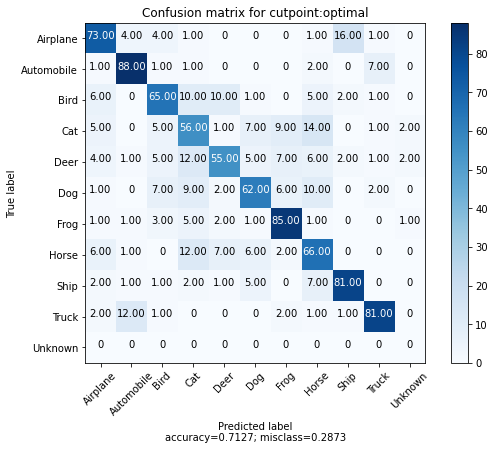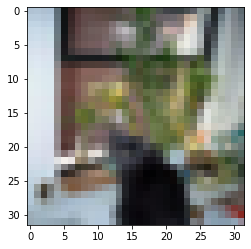使用 TensorFlow Similarity 进行图像相似性搜索的度量学习
作者: Owen Vallis
创建日期 2021/09/30
最后修改日期 2022/02/29
描述: 在 CIFAR-10 图像上使用相似性度量学习的示例。
概述
此示例基于“用于图像相似性搜索的度量学习”示例。我们旨在使用相同的数据集,但使用TensorFlow Similarity实现模型。
度量学习旨在训练能够将输入嵌入到高维空间的模型,使得“相似”的输入彼此拉近,而“不相似”的输入彼此推远。训练完成后,这些模型可以为下游系统生成嵌入,在这些系统中,这种相似性非常有用,例如作为搜索的排序信号或作为另一个监督问题的预训练嵌入模型。
有关度量学习的更详细概述,请参阅
设置
本教程将使用TensorFlow Similarity库来学习和评估相似性嵌入。TensorFlow Similarity 提供了以下组件:
- 使训练对比模型变得简单快速。
- 更容易确保批次包含示例对。
- 能够评估嵌入的质量。
TensorFlow Similarity 可以通过 pip 轻松安装,如下所示:
pip -q install tensorflow_similarity
import random
from matplotlib import pyplot as plt
from mpl_toolkits import axes_grid1
import numpy as np
import tensorflow as tf
from tensorflow import keras
import tensorflow_similarity as tfsim
tfsim.utils.tf_cap_memory()
print("TensorFlow:", tf.__version__)
print("TensorFlow Similarity:", tfsim.__version__)
TensorFlow: 2.7.0
TensorFlow Similarity: 0.15.5
数据集采样器
本教程将使用 CIFAR-10 数据集。
为了使相似性模型有效学习,每个批次必须包含每个类别的至少 2 个示例。
为了简化这一过程,tf_similarity 提供了 Sampler(采样器)对象,您可以通过它设置批次中类别的数量以及每个类别的最少示例数。
训练和验证数据集将使用 TFDatasetMultiShotMemorySampler 对象创建。该对象创建一个采样器,从TensorFlow Datasets加载数据集,并产生包含目标数量类别和每个类别目标数量示例的批次。此外,我们可以限制采样器只产生 class_list 中定义的类别子集,从而使我们能够在一部分类别上进行训练,然后测试嵌入对未见类别的泛化能力。这在处理小样本学习问题时非常有用。
以下单元格创建一个 train_ds 示例,它:
- 从 TFDS 加载 CIFAR-10 数据集,然后获取
examples_per_class_per_batch。 - 确保采样器将类别限制在
class_list中定义的范围。 - 确保每个批次包含 10 个不同的类别,每个类别有 8 个示例。
我们也以同样的方式创建一个验证数据集,但我们将每个类别的总示例数限制为 100 个,并且每个类别的批次示例数设置为默认值 2。
# This determines the number of classes used during training.
# Here we are using all the classes.
num_known_classes = 10
class_list = random.sample(population=range(10), k=num_known_classes)
classes_per_batch = 10
# Passing multiple examples per class per batch ensures that each example has
# multiple positive pairs. This can be useful when performing triplet mining or
# when using losses like `MultiSimilarityLoss` or `CircleLoss` as these can
# take a weighted mix of all the positive pairs. In general, more examples per
# class will lead to more information for the positive pairs, while more classes
# per batch will provide more varied information in the negative pairs. However,
# the losses compute the pairwise distance between the examples in a batch so
# the upper limit of the batch size is restricted by the memory.
examples_per_class_per_batch = 8
print(
"Batch size is: "
f"{min(classes_per_batch, num_known_classes) * examples_per_class_per_batch}"
)
print(" Create Training Data ".center(34, "#"))
train_ds = tfsim.samplers.TFDatasetMultiShotMemorySampler(
"cifar10",
classes_per_batch=min(classes_per_batch, num_known_classes),
splits="train",
steps_per_epoch=4000,
examples_per_class_per_batch=examples_per_class_per_batch,
class_list=class_list,
)
print("\n" + " Create Validation Data ".center(34, "#"))
val_ds = tfsim.samplers.TFDatasetMultiShotMemorySampler(
"cifar10",
classes_per_batch=classes_per_batch,
splits="test",
total_examples_per_class=100,
)
Batch size is: 80
###### Create Training Data ######
converting train: 0%| | 0/50000 [00:00<?, ?it/s]
The initial batch size is 80 (10 classes * 8 examples per class) with 0 augmenters
filtering examples: 0%| | 0/50000 [00:00<?, ?it/s]
selecting classes: 0%| | 0/10 [00:00<?, ?it/s]
gather examples: 0%| | 0/50000 [00:00<?, ?it/s]
indexing classes: 0%| | 0/50000 [00:00<?, ?it/s]
##### Create Validation Data #####
converting test: 0%| | 0/10000 [00:00<?, ?it/s]
The initial batch size is 20 (10 classes * 2 examples per class) with 0 augmenters
filtering examples: 0%| | 0/10000 [00:00<?, ?it/s]
selecting classes: 0%| | 0/10 [00:00<?, ?it/s]
gather examples: 0%| | 0/1000 [00:00<?, ?it/s]
indexing classes: 0%| | 0/1000 [00:00<?, ?it/s]
可视化数据集
采样器将打乱数据集,因此我们可以通过绘制前 25 张图像来了解数据集。
采样器提供一个 get_slice(begin, size) 方法,允许我们轻松选择一个样本块。
或者,我们可以使用 generate_batch() 方法来产生一个批次。这可以让我们检查批次是否包含预期的类别数量和每个类别的示例数量。
num_cols = num_rows = 5
# Get the first 25 examples.
x_slice, y_slice = train_ds.get_slice(begin=0, size=num_cols * num_rows)
fig = plt.figure(figsize=(6.0, 6.0))
grid = axes_grid1.ImageGrid(fig, 111, nrows_ncols=(num_cols, num_rows), axes_pad=0.1)
for ax, im, label in zip(grid, x_slice, y_slice):
ax.imshow(im)
ax.axis("off")

嵌入模型
接下来,我们使用 Keras Functional API 定义一个 SimilarityModel。该模型是一个标准的卷积神经网络,并增加了一个应用 L2 归一化的 MetricEmbedding 层。当使用余弦距离时,度量嵌入层非常有用,因为我们只关心向量之间的角度。
此外,SimilarityModel 提供了许多辅助方法,用于:
- 索引嵌入示例
- 执行示例查找
- 评估分类
- 评估嵌入空间的质量
有关更多详细信息,请参阅TensorFlow Similarity 文档。
embedding_size = 256
inputs = keras.layers.Input((32, 32, 3))
x = keras.layers.Rescaling(scale=1.0 / 255)(inputs)
x = keras.layers.Conv2D(64, 3, activation="relu")(x)
x = keras.layers.BatchNormalization()(x)
x = keras.layers.Conv2D(128, 3, activation="relu")(x)
x = keras.layers.BatchNormalization()(x)
x = keras.layers.MaxPool2D((4, 4))(x)
x = keras.layers.Conv2D(256, 3, activation="relu")(x)
x = keras.layers.BatchNormalization()(x)
x = keras.layers.Conv2D(256, 3, activation="relu")(x)
x = keras.layers.GlobalMaxPool2D()(x)
outputs = tfsim.layers.MetricEmbedding(embedding_size)(x)
# building model
model = tfsim.models.SimilarityModel(inputs, outputs)
model.summary()
Model: "similarity_model"
_________________________________________________________________
Layer (type) Output Shape Param #
=================================================================
input_1 (InputLayer) [(None, 32, 32, 3)] 0
rescaling (Rescaling) (None, 32, 32, 3) 0
conv2d (Conv2D) (None, 30, 30, 64) 1792
batch_normalization (BatchN (None, 30, 30, 64) 256
ormalization)
conv2d_1 (Conv2D) (None, 28, 28, 128) 73856
batch_normalization_1 (Batc (None, 28, 28, 128) 512
hNormalization)
max_pooling2d (MaxPooling2D (None, 7, 7, 128) 0
)
conv2d_2 (Conv2D) (None, 5, 5, 256) 295168
batch_normalization_2 (Batc (None, 5, 5, 256) 1024
hNormalization)
conv2d_3 (Conv2D) (None, 3, 3, 256) 590080
global_max_pooling2d (Globa (None, 256) 0
lMaxPooling2D)
metric_embedding (MetricEmb (None, 256) 65792
edding)
=================================================================
Total params: 1,028,480
Trainable params: 1,027,584
Non-trainable params: 896
_________________________________________________________________
相似性损失
相似性损失期望包含每个类别的至少 2 个示例的批次,并从中计算成对正距离和负距离的损失。这里我们使用 MultiSimilarityLoss() (论文),它是TensorFlow Similarity中的几种损失之一。该损失试图使用批次中所有信息丰富的对,并考虑自相似性、正相似性和负相似性。
epochs = 3
learning_rate = 0.002
val_steps = 50
# init similarity loss
loss = tfsim.losses.MultiSimilarityLoss()
# compiling and training
model.compile(
optimizer=keras.optimizers.Adam(learning_rate), loss=loss, steps_per_execution=10,
)
history = model.fit(
train_ds, epochs=epochs, validation_data=val_ds, validation_steps=val_steps
)
Distance metric automatically set to cosine use the distance arg to override.
Epoch 1/3
4000/4000 [==============================] - ETA: 0s - loss: 2.2179Warmup complete
4000/4000 [==============================] - 38s 9ms/step - loss: 2.2179 - val_loss: 0.8894
Warmup complete
Epoch 2/3
4000/4000 [==============================] - 34s 9ms/step - loss: 1.9047 - val_loss: 0.8767
Epoch 3/3
4000/4000 [==============================] - 35s 9ms/step - loss: 1.6336 - val_loss: 0.8469
索引
现在我们已经训练了模型,可以创建一个示例索引。在这里,我们通过将 x 和 y 传递给索引,并将图像存储在 data 参数中,批量索引前 200 个验证示例。x_index 值被嵌入,然后添加到索引中以便进行搜索。y_index 和 data 参数是可选的,但允许用户将元数据与嵌入的示例关联起来。
x_index, y_index = val_ds.get_slice(begin=0, size=200)
model.reset_index()
model.index(x_index, y_index, data=x_index)
[Indexing 200 points]
|-Computing embeddings
|-Storing data points in key value store
|-Adding embeddings to index.
|-Building index.
0% 10 20 30 40 50 60 70 80 90 100%
|----|----|----|----|----|----|----|----|----|----|
***************************************************
校准
构建索引后,我们可以使用匹配策略和校准指标来校准距离阈值。
在这里,我们使用 K=1 作为分类器,寻找最优的 F1 分数。所有在校准阈值距离处或之下的匹配都将被标记为查询示例与匹配结果相关联的标签之间的正匹配,而所有高于阈值距离的匹配都将被标记为负匹配。
此外,我们还传入额外的指标进行计算。输出中的所有值都在校准阈值处计算。
最后,model.calibrate() 返回一个 CalibrationResults 对象,其中包含:
"cutpoints":一个 Python 字典,将切点名称映射到包含与特定距离阈值相关联的ClassificationMetric值的字典,例如"optimal" : {"acc": 0.90, "f1": 0.92}。"thresholds":一个 Python 字典,将ClassificationMetric名称映射到包含在每个距离阈值处计算出的指标值的列表,例如{"f1": [0.99, 0.80], "distance": [0.0, 1.0]}。
x_train, y_train = train_ds.get_slice(begin=0, size=1000)
calibration = model.calibrate(
x_train,
y_train,
calibration_metric="f1",
matcher="match_nearest",
extra_metrics=["precision", "recall", "binary_accuracy"],
verbose=1,
)
Performing NN search
Building NN list: 0%| | 0/1000 [00:00<?, ?it/s]
Evaluating: 0%| | 0/4 [00:00<?, ?it/s]
computing thresholds: 0%| | 0/989 [00:00<?, ?it/s]
name value distance precision recall binary_accuracy f1
------- ------- ---------- ----------- -------- ----------------- --------
optimal 0.93 0.048435 0.869 1 0.869 0.929909
可视化
仅凭指标可能难以了解模型质量。一种补充方法是手动检查一组查询结果,以感受匹配质量。
这里我们取 10 个验证示例,并绘制它们与它们最近的 5 个邻居以及到查询示例的距离。查看结果,我们发现虽然它们不完美,但仍然代表有意义的相似图像,并且模型能够找到与姿态或图像光照无关的相似图像。
我们还可以看到,模型对某些图像非常有信心,导致查询与邻居之间的距离非常小。反之,随着距离变大,我们在类别标签中看到了更多错误。这是校准对于匹配应用至关重要的原因之一。
num_neighbors = 5
labels = [
"Airplane",
"Automobile",
"Bird",
"Cat",
"Deer",
"Dog",
"Frog",
"Horse",
"Ship",
"Truck",
"Unknown",
]
class_mapping = {c_id: c_lbl for c_id, c_lbl in zip(range(11), labels)}
x_display, y_display = val_ds.get_slice(begin=200, size=10)
# lookup nearest neighbors in the index
nns = model.lookup(x_display, k=num_neighbors)
# display
for idx in np.argsort(y_display):
tfsim.visualization.viz_neigbors_imgs(
x_display[idx],
y_display[idx],
nns[idx],
class_mapping=class_mapping,
fig_size=(16, 2),
)
Performing NN search
Building NN list: 0%| | 0/10 [00:00<?, ?it/s]










指标
我们还可以绘制 CalibrationResults 中包含的额外指标,以了解随着距离阈值增加时的匹配性能。
以下图表显示了精确率(Precision)、召回率(Recall)和 F1 分数(F1 Score)。我们可以看到,随着距离的增加,匹配精度会下降,但我们接受为正匹配的查询百分比(召回率)在校准距离阈值内增长得更快。
fig, (ax1, ax2) = plt.subplots(1, 2, figsize=(15, 5))
x = calibration.thresholds["distance"]
ax1.plot(x, calibration.thresholds["precision"], label="precision")
ax1.plot(x, calibration.thresholds["recall"], label="recall")
ax1.plot(x, calibration.thresholds["f1"], label="f1 score")
ax1.legend()
ax1.set_title("Metric evolution as distance increase")
ax1.set_xlabel("Distance")
ax1.set_ylim((-0.05, 1.05))
ax2.plot(calibration.thresholds["recall"], calibration.thresholds["precision"])
ax2.set_title("Precision recall curve")
ax2.set_xlabel("Recall")
ax2.set_ylabel("Precision")
ax2.set_ylim((-0.05, 1.05))
plt.show()

我们还可以为每个类别取 100 个示例,并绘制每个示例及其最近匹配的混淆矩阵。我们还添加了一个“额外”的第 10 个类别,代表高于校准距离阈值的匹配。
我们可以看到,大多数错误发生在动物类别之间,其中飞机(Airplane)和鸟类(Bird)之间存在一些有趣的混淆。此外,我们看到每个类别的 100 个示例中,只有少数返回了超出校准距离阈值的匹配。
cutpoint = "optimal"
# This yields 100 examples for each class.
# We defined this when we created the val_ds sampler.
x_confusion, y_confusion = val_ds.get_slice(0, -1)
matches = model.match(x_confusion, cutpoint=cutpoint, no_match_label=10)
cm = tfsim.visualization.confusion_matrix(
matches,
y_confusion,
labels=labels,
title="Confusion matrix for cutpoint:%s" % cutpoint,
normalize=False,
)

无匹配
我们可以绘制超出校准阈值的示例,以查看哪些图像与索引中的任何示例都不匹配。
这可以提供有关可能需要索引哪些其他示例或发现类别中异常示例的见解。
idx_no_match = np.where(np.array(matches) == 10)
no_match_queries = x_confusion[idx_no_match]
if len(no_match_queries):
plt.imshow(no_match_queries[0])
else:
print("All queries have a match below the distance threshold.")

可视化簇
快速了解模型表现质量并理解其不足的最佳方法之一是将嵌入投影到二维空间中。
这使我们能够检查图像簇,并了解哪些类别是相互纠缠的。
# Each class in val_ds was restricted to 100 examples.
num_examples_to_clusters = 1000
thumb_size = 96
plot_size = 800
vx, vy = val_ds.get_slice(0, num_examples_to_clusters)
# Uncomment to run the interactive projector.
# tfsim.visualization.projector(
# model.predict(vx),
# labels=vy,
# images=vx,
# class_mapping=class_mapping,
# image_size=thumb_size,
# plot_size=plot_size,
# )